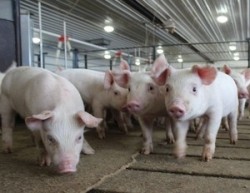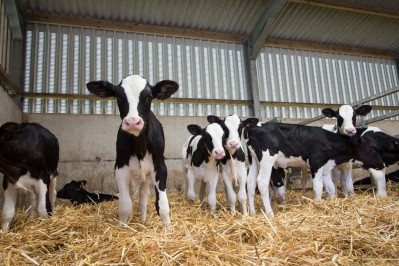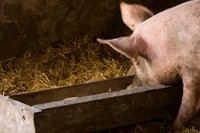Antibiotic free swine production: Eastman Chemical to showcase organic acids expertise

The company is set to present data on its work with short-chain organic acids and multi-acid blends in antibiotic-free swine production at a Tech XChange event, said Angelo Lauwaerts, application development and technical sales manager. It has used the products as a way to enhance piglets' nutritional balance and offer alternatives to producers moving away from using antibiotics in growth promotion.
“Last year and this year it was clear that it was shifting and the impression is that the US might take a leap, not just a few steps,” he told Feed Navigator. “In Europe, there was a ban on growth promoters, but when you talk to people in the US, we’re talking about banning antibiotics completely.”
Antibiotic-free production
While many of Eastman’s products have been on the market in Europe, where the use of antibiotics in animal feed for growth promotion was ended in 2006, they are less well known to the US market, said Lauwaerts.
But, as consumer groups in the US call for reductions in the use of antibiotics in animal production, producers have more questions about alternative products, he said.
US producers have a plethora of questions regarding alternative solutions including how they are used, what responses can be generated and what option best fit the situation, he said.
"I want to try to explain better, so people can make a reasoned decision on which product or blend will be most fit for their application, so they can make a more reasoned choice," said Lauwaerts.
Product details
In swine, the organic acids are often used to alter the pH of piglets’ digestive tracts to help protect against pathogens and reduce instances of diarrhea, he said. However, they can also be used to moderate gut microflora.
“Increasing the acidity is part of making the stomach more efficient as a barrier,” he said. It also can influence the time it takes for food to be digested and improve reactions from pancreatic enzymes, he added.
In piglets, one of the most critical times to offer acid supplements is during the post-weaning period, said Lauwaerts. In older pigs, the supplements can be used to handle specific conditions.
“If you withdraw antibiotics, then you get into a more natural environment,” he said. There are “natural processes which help defend the body against pathogens, and organic acids play roles in this.”
Acidifiers, in general, can be used in several different ways, he said. Some are solid products and others can be added to pigs’ drinking water for additional treatment.
“Most of them, the acid products will be supplemented through the feed as the basis,” he said. “But in cases of acute diarrhea where the standard feed is not sufficient, then sometimes products are added to the drinking water.”
Additionally, not all products work in the stomach, he said. Some have been designed to influence or bolster health of the intestinal tract.
History on offer
An additional goal of the presentation will be to offer what has been learned through experience, said Lauwaerts.
Suggestions like how much of a product would be needed to address a specific problem or what blend would work best would be based on past exposure, he said. “A lot of that advice can only be given based on years of experience,” he added.
Products can be used in varying strengths and garner different costs, he said.
“You can’t just take a table out and say [use this much,] there are a lot of factors involved there,” he said. “Practical experience in the market and different management situations will help.”
About IPPE
The integrated trade show, set in Atlanta, Georgia is set to have more than 1,200 exhibitors, and officials are predicting more than 28,000 attendees this year. The event is scheduled to run from January 26-28.
The international event combines three trade shows, including the International Poultry Expo, the International Feed Expo and the International meat Expo. This year’s event is being sponsored by the American Feed Industry Association (AFIA) along with the US Poultry and Egg Association (USPOULTRY) and the North American meat Institute (NAMI).








